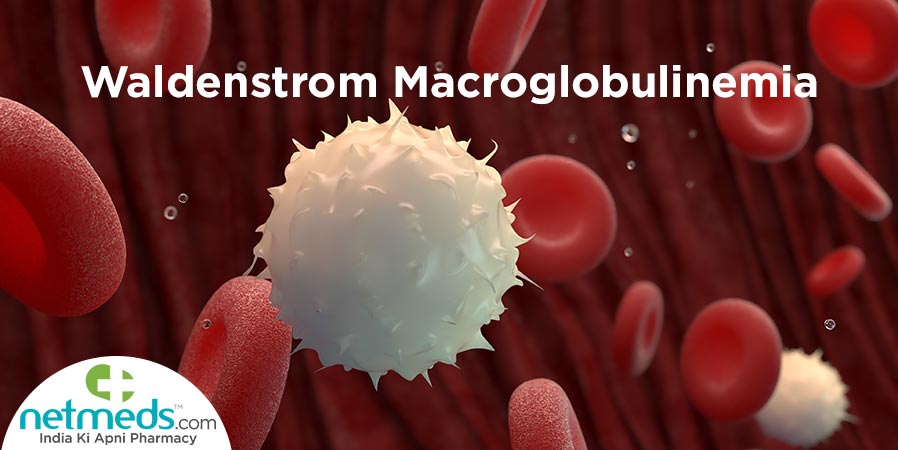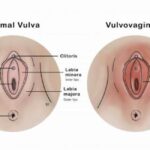Waldenström’s Macroglobulinemia (WM) is a rare, indolent type of non-Hodgkin lymphoma characterized by the excessive production of immunoglobulin M (IgM) monoclonal proteins. This blood cancer originates from abnormal B lymphocytes that evolve into lymphoplasmacytic cells. These malignant cells infiltrate the bone marrow, spleen, liver, and lymph nodes, impairing the body’s ability to produce healthy blood cells and causing a wide range of clinical complications.

What Causes Waldenström’s Macroglobulinemia?
The exact etiology of Waldenström’s Macroglobulinemia remains uncertain, but several genetic and environmental risk factors have been implicated. Most notably, WM is associated with mutations in the MYD88 L265P gene, present in over 90% of patients. This mutation leads to the activation of pathways that support the growth and survival of malignant B-cells.
Other contributing factors may include:
- Family history of hematologic cancers
- Autoimmune disorders
- Exposure to certain chemicals or pesticides
Signs and Symptoms of WM
Due to its slow progression, WM may remain asymptomatic for years. However, as the disease advances, symptoms manifest due to increased blood viscosity, infiltration of lymphoid tissues, and abnormal IgM protein levels.
Common Symptoms Include:
- Fatigue (due to anemia)
- Unexplained weight loss
- Night sweats
- Frequent infections
- Nosebleeds or easy bruising
- Peripheral neuropathy
- Enlarged lymph nodes or spleen
- Blurred vision or headaches (from hyperviscosity)
- Raynaud’s phenomenon
Diagnostic Approach for Waldenström’s Macroglobulinemia
Accurate diagnosis requires a combination of clinical evaluation, laboratory studies, imaging, and histopathology.
Blood Tests:
- Complete Blood Count (CBC): Often reveals anemia, leukopenia, or thrombocytopenia.
- Serum Protein Electrophoresis (SPEP): Identifies a monoclonal IgM spike.
- Immunofixation: Confirms the monoclonal nature of the IgM protein.
- Serum viscosity: Elevated in symptomatic patients.
Bone Marrow Biopsy:
A critical component for diagnosis, the biopsy often reveals lymphoplasmacytic infiltration. Immunophenotyping typically shows expression of markers such as CD19, CD20, and surface IgM.
Genetic Testing:
Assessment for MYD88 L265P and CXCR4 mutations can help confirm diagnosis and guide therapeutic strategies.
How Is WM Different from Other Lymphomas?
WM falls under the umbrella of lymphoplasmacytic lymphoma, but its hallmark is the production of IgM monoclonal protein. Unlike multiple myeloma, which predominantly involves IgG or IgA proteins and bone lesions, WM is characterized by:
- IgM overproduction
- No lytic bone lesions
- Slower progression rate
- Pronounced hyperviscosity syndrome
Treatment Options for Waldenström’s Macroglobulinemia
Not all WM patients require immediate treatment. Asymptomatic individuals are often monitored under a “watch and wait” strategy.
Indications for Treatment:
- Symptomatic hyperviscosity
- Severe anemia or thrombocytopenia
- Progressive lymphadenopathy
- Peripheral neuropathy
- Cryoglobulinemia
First-Line Therapies:
1. Chemoimmunotherapy
- Rituximab combined with bendamustine or cyclophosphamide
- Effective in reducing tumor burden and IgM levels
2. Targeted Therapy
- BTK Inhibitors (e.g., Ibrutinib, Zanubrutinib): Block the Bruton’s tyrosine kinase pathway activated by MYD88 mutations
- Particularly effective in MYD88 L265P-positive patients
3. Plasmapheresis
- Used in emergencies to reduce blood viscosity rapidly
- Not a standalone therapy but useful in acute management
4. Stem Cell Transplantation
- Autologous stem cell transplantation may be considered in younger patients or those with relapsed/refractory disease
Prognosis and Life Expectancy
WM is typically a chronic, slow-growing malignancy. Many patients live for years, with a median survival exceeding 10 years with modern treatment. However, disease progression and complications such as transformation to aggressive lymphoma or amyloidosis can affect prognosis.
Key Prognostic Factors:
- Age
- Hemoglobin level
- Beta-2 microglobulin levels
- Platelet count
- IgM levels
Managing Life with WM
Long-term management includes regular follow-ups with hematologists, monitoring IgM levels, blood counts, and overall organ function. Patients should avoid medications that increase bleeding risk and should report new symptoms promptly. Support groups and counseling may also improve quality of life.
Frequently Asked Questions:
What is Waldenström’s Macroglobulinemia?
WM is a rare type of slow-growing non-Hodgkin lymphoma characterized by abnormal B-cells producing excess IgM proteins.
Is WM curable?
There is currently no cure for WM, but many patients live long lives with proper treatment and monitoring.
How is WM diagnosed?
Diagnosis is made through blood tests, bone marrow biopsy, and genetic testing, particularly identifying MYD88 L265P mutations.
What is the life expectancy of someone with WM?
With treatment, the median survival is over 10 years, and some patients live significantly longer depending on individual risk factors.
Can WM turn into a more aggressive cancer?
Yes, although rare, WM can transform into diffuse large B-cell lymphoma (DLBCL), which is a more aggressive form.
Is WM hereditary?
While most cases are sporadic, a family history of WM or related cancers may slightly increase the risk.
Waldenström’s Macroglobulinemia remains a complex but manageable disease with advances in targeted therapies significantly improving patient outcomes. Early recognition of symptoms, accurate diagnosis, and personalized treatment strategies are essential to ensure the best prognosis for affected individuals.

